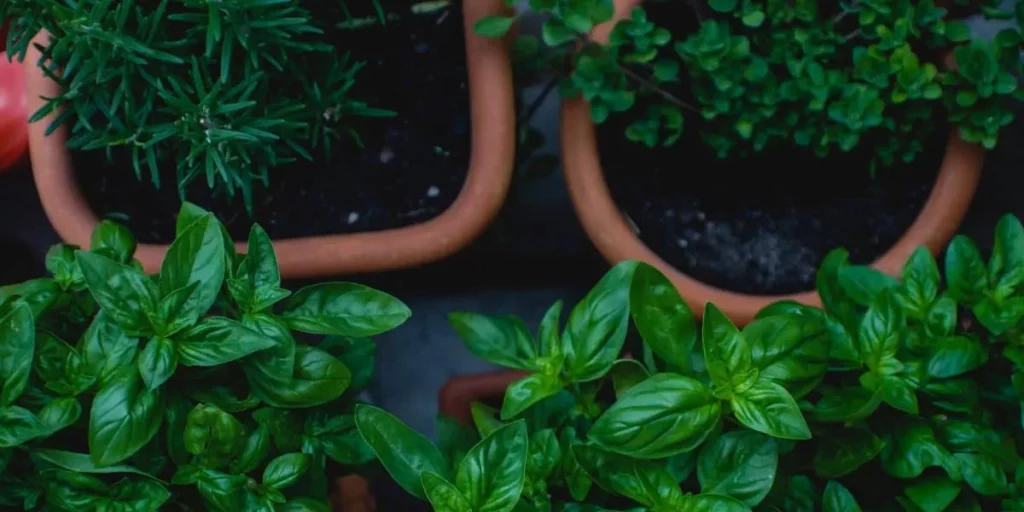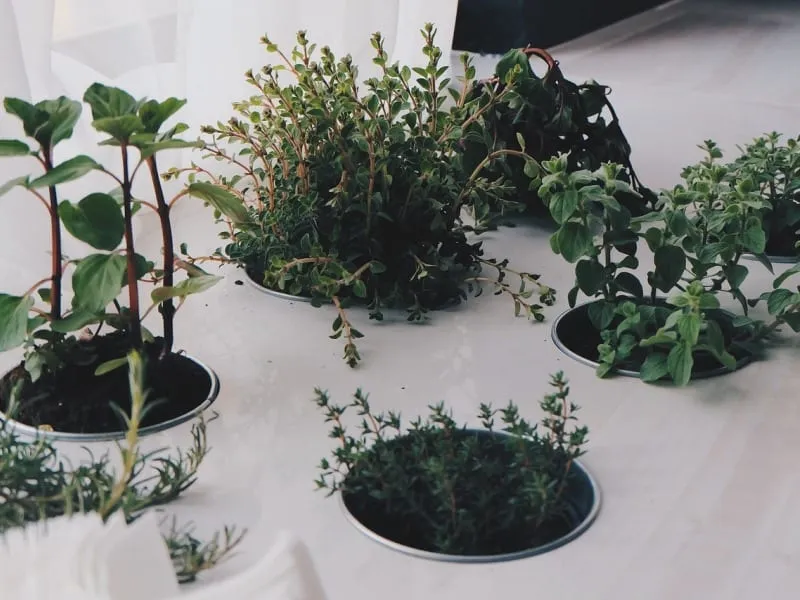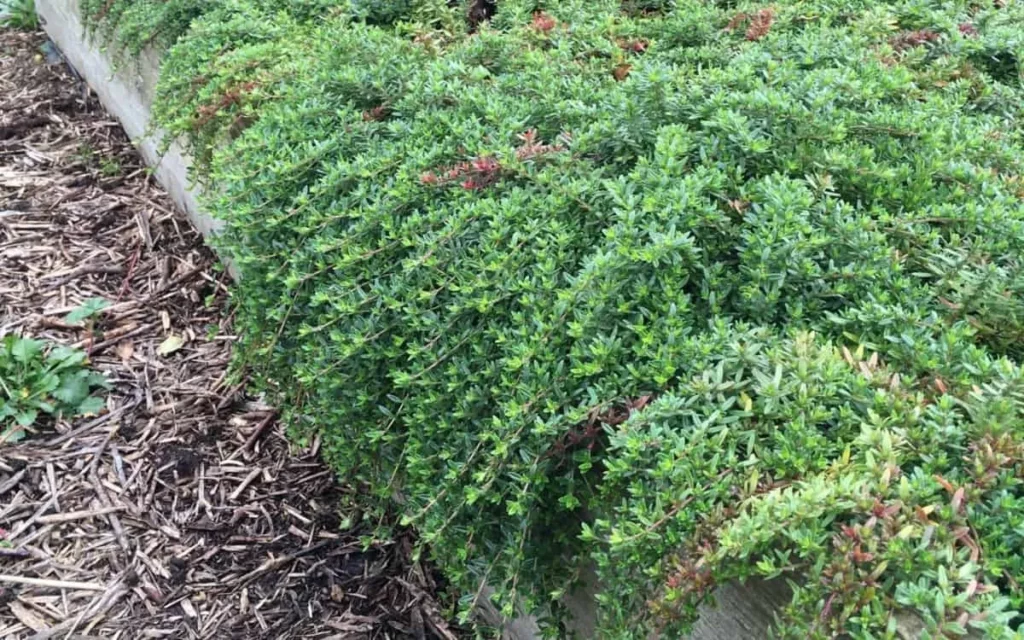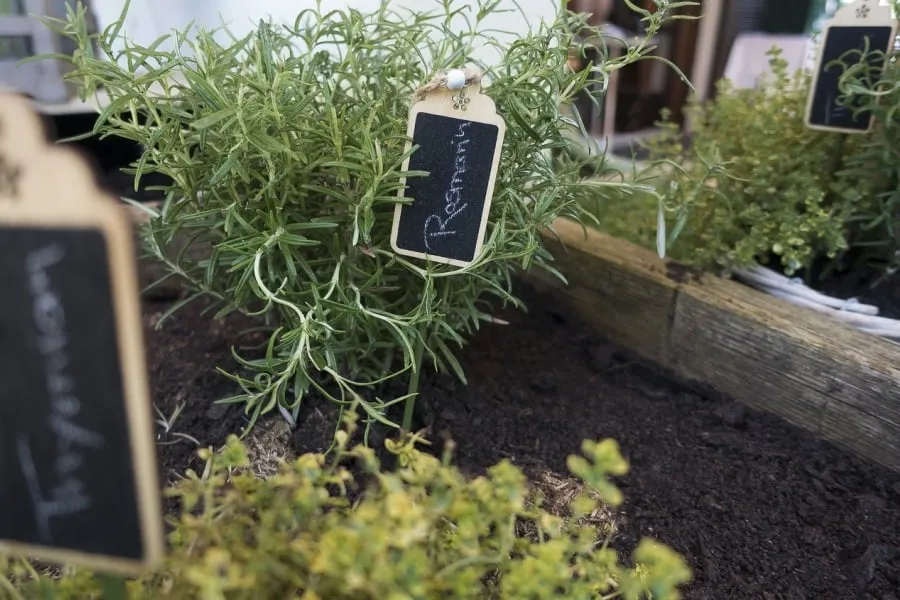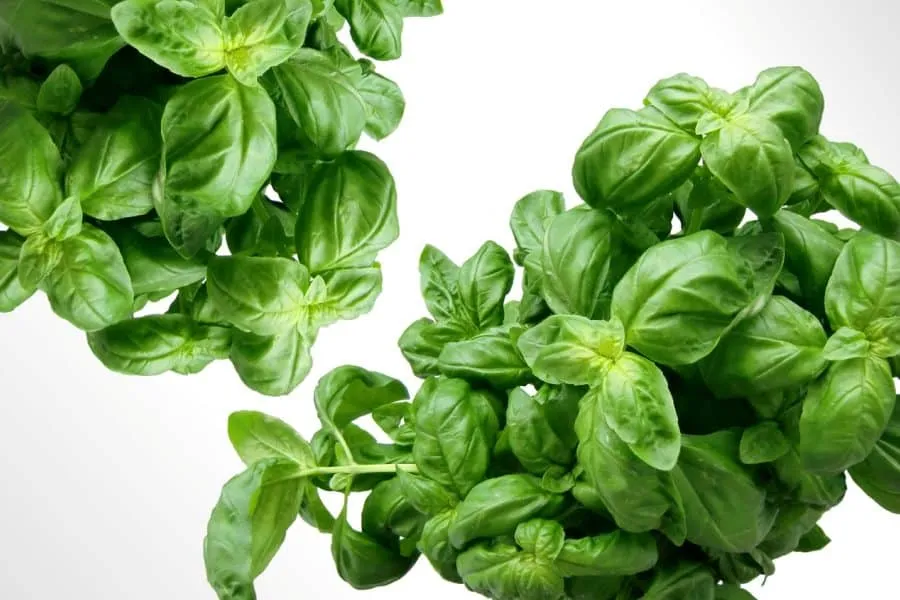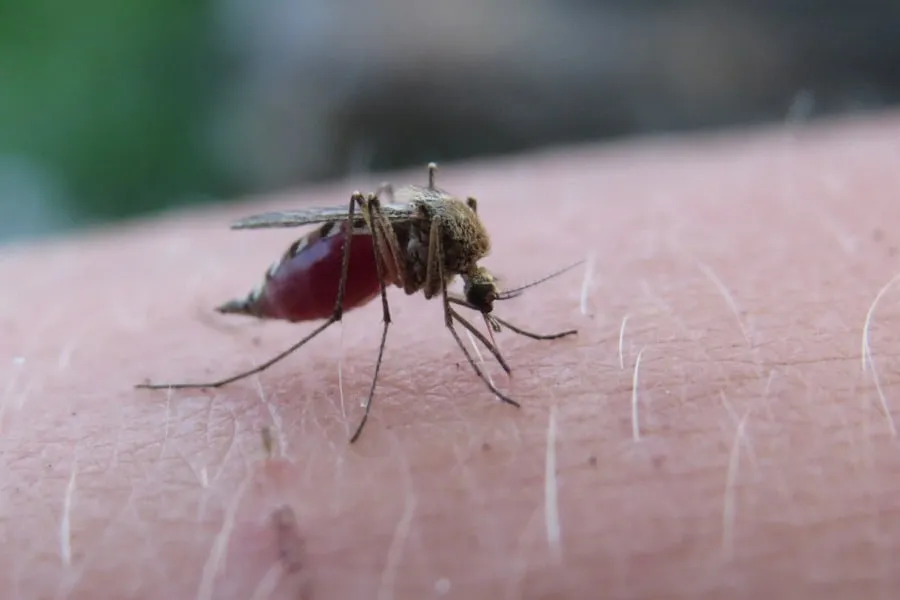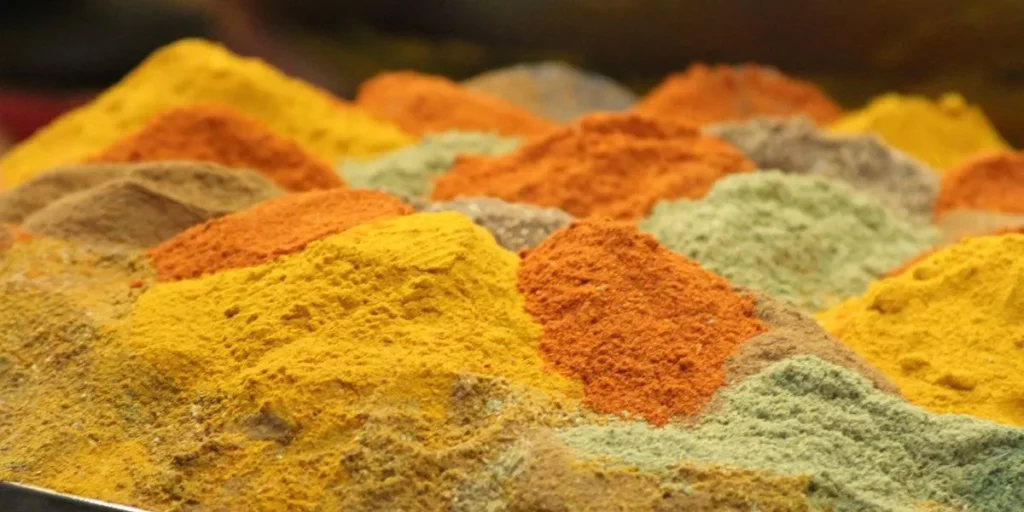Even if you don’t have much space, you can still grow herbs in pots and enjoy the benefits of this beautiful greenery.
Growing herbs in pots has many advantages. For example, it is relatively easy to keep herbs in the right planting substrate in a pot and easier to protect them from pests and weeds. Potted plants offer greater flexibility in terms of location. However, it is also necessary to adjust the watering and fertilizing of herbs in pots.
Growing herbs in pots to start an herb garden is easy. Even a beginner can easily implement this and have a lot of fun doing it. I’ve listed for you here the best tips I’ve learned about growing herbs in containers.
Contents
The 5 biggest benefits of growing herbs in pots
Space Saving:
Growing herbs in containers allows you to grow and enjoy herbs even if you can’t call a big enough patch of dirt your garden. It’s also ideal for urban apartments and dorms, where the luxury of space is often not available.
Flexibility:
Because you can easily move potted herbs, you’ll have a more flexible garden. If your plants get too hot, you can easily move them to a shadier spot, or if you want to redesign your pot garden, that can be done quickly as well.
Protection:
Pots and other containers act as barriers that can protect your herbs from weeds, pests and disease. It’s also a good way to keep invasive herbs under control.
Decoration:
If you’re planting ornamental herbs, there’s no better way to show them off than to plant them in beautiful decorative pots. They come in many shapes, sizes and designs. The choices are virtually endless, and as they say, the only limit is your imagination.
Winterizing:
You can easily bring herbs in pots indoors to protect them from frost.
The 5 best herbs to grow in pots

Basil:
It loves sun, but not too strong, direct sunlight. Therefore, place it in a semi-shaded spot in mid-summer. In full, strong sun, it often dries out quickly, so regular watering won’t hurt. However, basil can tolerate irregular watering as long as you don’t let it wilt.
Mint:
It likes slightly moist soil and partial shade. Mint is a very invasive herb. Therefore, do not plant it in a container with other herbs. Just having it near other potted plants can quickly lead to uncontrolled propagation.
Parsley:
Parsley is not very finicky and thrives under normal growing conditions – partial to full sun location and slightly moist to soggy soil. Good soil drainage is essential for survival, however, as it does not like to stand in extremely wet soil with waterlogging.
Rosemary:
It grows best in slightly moist, well-drained soil and in a semi- to full-sun location. Like basil, it should be allowed to dry out a bit before watering again. To prevent fungal diseases, the plant should not be kept too moist and the root ball should be submerged from below rather than flooded from above.
Thyme:
Thyme can grow in nutrient-poor but well-drained soil as long as it receives full sun and an average supply of water. This herb requires little care as it grows well in hot and dry conditions.
What to consider when growing herbs in pots?
Pay attention to the requirements of the herbs:
Although most herbs are suitable for pots, some are easier to grow in pots than others. Review the requirements of the herbs you’ve chosen for your container garden and make sure they meet the conditions needed to grow and thrive.
Choose the most appropriate container:
Choose containers based on the herbs you want to grow. How many herbs will you plant in one container? How tall are your herbs? How long are their roots? Deciding where to place your potted herbs can also help you choose appropriate containers. An outdoor container garden means you’ll need sturdier and more durable pots than you would for an indoor container garden. For indoor container gardening, you may want to choose ornamental pots that can serve as decorations for your home. After you’ve considered all these factors, make sure your containers have enough drainage holes. The drainage holes need to be small enough to hold the soil in the pot, but large enough to allow water to drain out of the soil. Indoors, of course, you’ll also use nice planters or coasters.
Pay attention to location:
When choosing a location for your potted herbs, whether indoors or outdoors, always make sure it is favorable for your herbs. Some herbs require more sun than the others. Some are more susceptible to cold winds, while others prefer shady spots.
Use the right herb soil:
One of the biggest mistakes you can make when growing herbs in pots is to use a common garden soil. Garden soil, even if it is rich in nutrients, is just too heavy for most potted herbs. Use two parts good, sterile potting soil, one part perlite to make the soil “lighter,” and one part compost to give your herbs the nutrient boost they need to grow. Perlite and compost are good amendments to potting soil because they help retain water and make the soil less compact, allowing air to pass through. For more details on herb soil, click here.
Fertilize as needed:
Potted plants need more fertilizer because they use up nutrients faster than their counterparts that grow in the ground. Mix compost with potting soil and use organic fertilizers that release nutrients slowly to ensure the most consistent nutrient supply.
What containers should you use to grow herbs?

Terracotta:
Pots made of terra cotta are a popular choice for herb container gardens. They are porous, allow the soil to breathe and retain heat. However, they are prone to breakage and dry out relatively quickly.
Plastic:
Plastic containers are another popular choice because they are lightweight, do not break easily, and are non-porous (so they can hold moisture better). Although there are other designs, they often have the shape and color of terra cotta pots. But plastic containers don’t let air through and tend to become brittle with prolonged exposure to the elements.
Wood:
Wood is good if you want to give your garden a natural feel. You can use a wooden barrel, wicker baskets, wooden crates or troughs. They insulate well during the cold season and are durable, especially if they are made of high-quality wood. Since wood is considered a semi-porous material and to prevent rotting, it is recommended to line wooden containers with plastic.
Glazed pot:
Glazed pots are popular in Japanese and indoor gardens due to their aesthetic appeal. They come in a variety of shapes and colors and are perfect for windowsill herb gardens. However, they are not as porous as terra cotta pots and need to be perforated to ensure good drainage.
Metal:
Metal containers usually come in the form of old tin cans, water cans, and even metal bathtubs. They aren’t porous either, but they won’t break and will last a long time. You can even use decorative vintage tin cans for indoor container gardening.
Concrete:
In recent years, it’s become increasingly fashionable to use concrete as a material, especially for larger planters. Aside from purchasing, concrete makes it relatively easy to create highly customized planters. The advantages and disadvantages are similar to those of terracotta containers.
Important care tips for potted herbs
Sunlight:
In general, most herbs are sun lovers. While others do well with partial shade or even shade, there are herbs that do better in full sun. Therefore, it’s important to know your herbs’ sun needs and adjust accordingly. Outdoors, place your potted herbs in a location where they will get the amount of sunlight they need. Indoors, it’s best to place most herbs near windows, doors or other light sources that let the most sunlight into the room. Be aware, however, that if they are exposed to intense sunlight for too long, they can also dry out and wilt.
Watering:
Herbs in pots need to be watered more frequently, as they usually do not have enough soil to hold water. Note, however, that some herbs, it is best to dry out slightly between waterings to prevent root rot in the long run.
Fertilize:
Fertilize your herbs regularly or when they look pale and unhealthy. Do not use chemical-based fertilizer, as it can affect the flavor of your herbs. Also, this type of fertilizer promotes fast growth rather than slow and healthy growth.
Herbs that grow too fast often have fewer oils and flavors than those that have grown slower and bushier. So use fertilizer sparingly with herbs in general. If you used a good, rather nutrient-rich soil when planting, you will likely need to fertilize your herbs very little to not at all.
Prune back:
Cutting back encourages bushy growth, which is probably how you want your herbs to grow. This is especially true for culinary herbs – the more they are used, the more they grow. During harvest, be careful not to remove more than 2/3 of the plant so that it still retains enough energy and leaves can grow back quickly.
Clean out plants:
Pruning out plants (also known regionally as plucking out) refers to the process of removing spent flowers to prevent herbs from forming seeds and sowing them. Once the herbs have seeded, they think their work is done and stop growing. Cutting off spent flowers will therefore encourage them to continue to form leaves and we delay the cessation of growth.
Top 5 tips for watering potted herbs.
Allow to dry out:
Let potted herbs dry out moderately between watering, but don’t let them wilt. If the top few inches of soil already feel dry, that’s a good indication that you need to water your potted herbs.
Water roots:
Don’t water the top of the plant; instead, moisten only the soil. Excess water on the leaves can cause fungal infections and other diseases. You can also submerge the root ball of potted herbs in water. Lining the bottom of your pots with gravel, rocks, or pebbles will ensure that water can drain out of the soil. This will also prevent the soil from reabsorbing water if the pot sits on a trivet.
Water small pots more frequently:
The smaller the pot, the faster it dries out. Therefore, water herbs in small pots more often.
Water porous pots more often:
Terracotta and unglazed clay pots allow moisture in the potting soil to evaporate more quickly. Therefore, herbs in these containers need to be watered more frequently than in plastic, metal and glazed pots.
Water in the morning:
It’s best to water in the morning, before your potted herbs are exposed to the heat of the sun.

